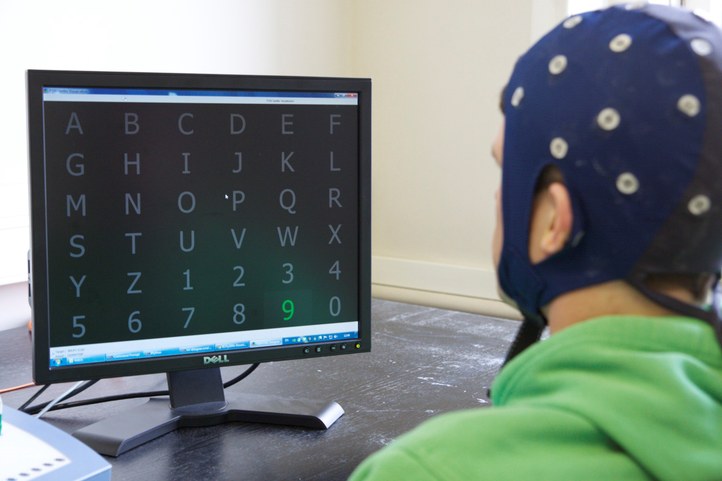Machine Learning for Multi-modal Sensor Processing
Recent breakthroughs in the application of neural networks, deep learning and Bayesian models have put machine learning in the forefront of technological innovations. We address the improvement of machine learning techniques, driven by their application in new and challenging application domains, such as the automatic translation of sign language, the extraction of information from EEG data, condition monitoring, emotion recognition, or the control of ‘black box’ nonlinear dynamical systems based on noisy sensor data.
We have considerable experience with applications involving sequential data, in which information about past inputs needs to be incorporated in the model (e.g., detection of events in sequences, time series prediction, open loop and closed loop control, dynamical system modeling). We perform research into deep architectures such as convolutional neural networks, deep RNNs and LSTMs, deep generative models and deep reinforcement learning, as well as transfer learning for such architectures. We also apply other machine learning techniques targeted at self calibration and transfer learning in EEG-based brain-computer interfaces (BCI) for communication and control.
As a sideline, we maintain a considerable track record in online machine learning competitions using state-of-the-art deep learning techniques, extensively relying on GPU acceleration:
- Kaggle Galaxy Zoo Challenge (4/4/2014): 1st/326, image classification, using deep learning
- ChaLearn Looking at People 2014 Challenge (20/03/2014): 5th/35 and first master thesis student, gesture recognition using deep learning
- Kaggle American Epilepsy Society Seizure Prediction Challenge (17/11/2014): 10th/504, epileptic seizure prediction based on EEG data using deep learning
- Kaggle NER 2015 BCI Challenge (24/02/2015): 12th/260, detection of error potentials in EEG signals using deep learning
- Kaggle National Data Science Bowl (16/03/2015), 1st/1049, Classification of plankton images using using an innovative combination of advanced deep learning techniques
- Kaggle Annual Data science Bowl (14/03/2016), 2nd/192, end-to-end extraction of minimal and maximal left ventricular heart volumes from MRI image sequences using an innovative combination of deep learning and domain knowledge
Staff
Joni Dambre, Wesley De Neve, Sofie Van Hoecke, Francis wyffels, Erik Mannens, Azarakhsh Jalavand
Researchers
Jeroen Burms, Jonas Degrave, Matthias Freiberger, Frederic Godin, Olivier Janssens, Ira Korshunova, Lionel Pigou, Thibault Verhoeven, Dieter De Witte
Projects
- Personal PhD grants from FWO, IWT and BOF
- IWT VIS O&M Excellence
Key publications
- “Deep Dynamic Neural Networks for Multimodal Gesture Segmentation and Recognition”, D. Wu et al., IEEE Transactions on Pattern Analysis and Machine Intelligence, 2016
- Strobbe T, wyffels F, Verstraeten R, De Meyer R, Van Campenhout J. Automatic architectural style detection using one-class support vector machines and graph kernels. AUTOMATION IN CONSTRUCTION. 2016;69:1–10
- Janssens, Olivier, Viktor Slavkovikj, Bram Vervisch, Kurt Stockman, Mia Loccufier, Steven Verstockt, Rik Van de Walle, and Sofie Van Hoecke. 2016. “Convolutional Neural Network Based Fault Detection for Rotating Machinery.” Journal of Sound and Vibration 377: 331–345.
- “Sign language recognition using convolutional neural networks”, L. Pigou et al., Lecture Notes in Computer Science, 2015
- “Rotation-invariant convolutional neural networks for galaxy morphology prediction”, Sander Dieleman, Kyle Willett and Joni Dambre (2015) MONTHLY NOTICES OF THE ROYAL ASTRONOMICAL SOCIETY. 450(2). P.1441-1459
- “Towards a symbiotic brain-computer interface: exploring the application-decoder interaction”, T. Verhoeven et al., Journal of Neural Engineering, 2015
- “True zero-training brain-computer interfacing: an online study”, P.-J. Kindermans et al., Plos One, 2014
- “Integrating dynamic stopping, transfer learning and language models in an adaptive zero-training ERP speller”, P.-J. Kindermans et al., Journal of Neural Engineering, 2014
